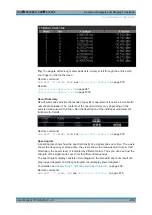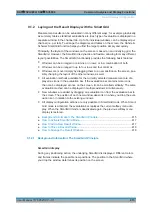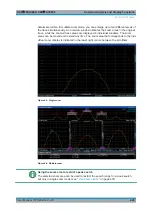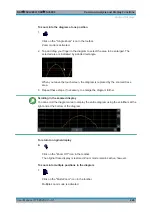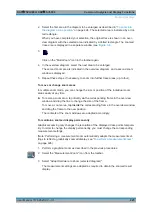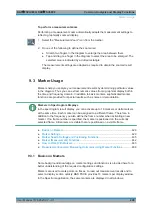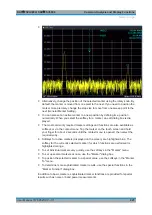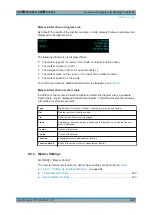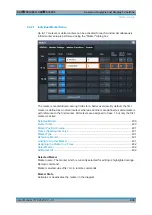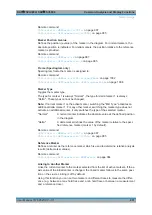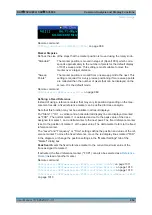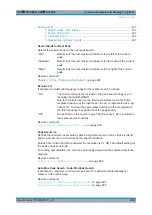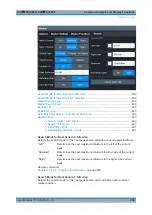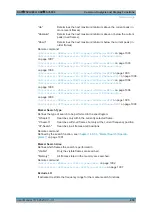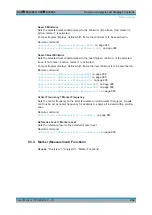
Common Analysis and Display Functions
R&S
®
FSVA3000/ R&S
®
FSV3000
428
User Manual 1178.8520.02 ─ 01
.................................................................................................428
9.3.1.1
Marker Types
All markers can be used either as normal markers or delta markers. A normal marker
indicates the absolute signal value at the defined position in the diagram. A delta
marker indicates the value of the marker relative to the specified reference marker (by
default marker 1).
In addition, special functions can be assigned to the individual markers. The availability
of special marker functions depends on whether the measurement is performed in the
frequency or time domain, and on the type of measurement.
Temporary markers are used in addition to the markers and delta markers to analyze
the measurement results for special marker functions. They disappear when the asso-
ciated function is deactivated.
9.3.1.2
Activating Markers
Only active markers are displayed in the diagram and in the marker table.
By default, marker 1 is active and positioned on the maximum value (peak) of trace 1
as a normal marker. If several traces are displayed, the marker is set to the maximum
value of the trace which has the lowest number and is not frozen (View mode). The
next marker to be activated is set to the frequency of the next lower level (next peak)
as a delta marker; its value is indicated as an offset to marker 1.
A marker can only be activated when at least one trace in the corresponding window is
visible. If a trace is switched off, the corresponding markers and marker functions are
also deactivated. If the trace is switched on again, the markers along with coupled
functions are restored to their original positions, provided the markers have not been
used on another trace.
9.3.1.3
Marker Results
Normal markers point to a sweep point on the time or frequency axis and display the
associated numeric value for that sweep point. Delta markers indicate an offset
between the level at the delta marker position and the level at the position of the
assigned reference marker, in dB.
Signal count markers determine the frequency of a signal at the marker position very
accurately.
The results can be displayed directly within the diagram area or in a separate table. By
default, the first two active markers are displayed in the diagram area. If more markers
are activated, the results are displayed in a marker table.
Marker Usage

